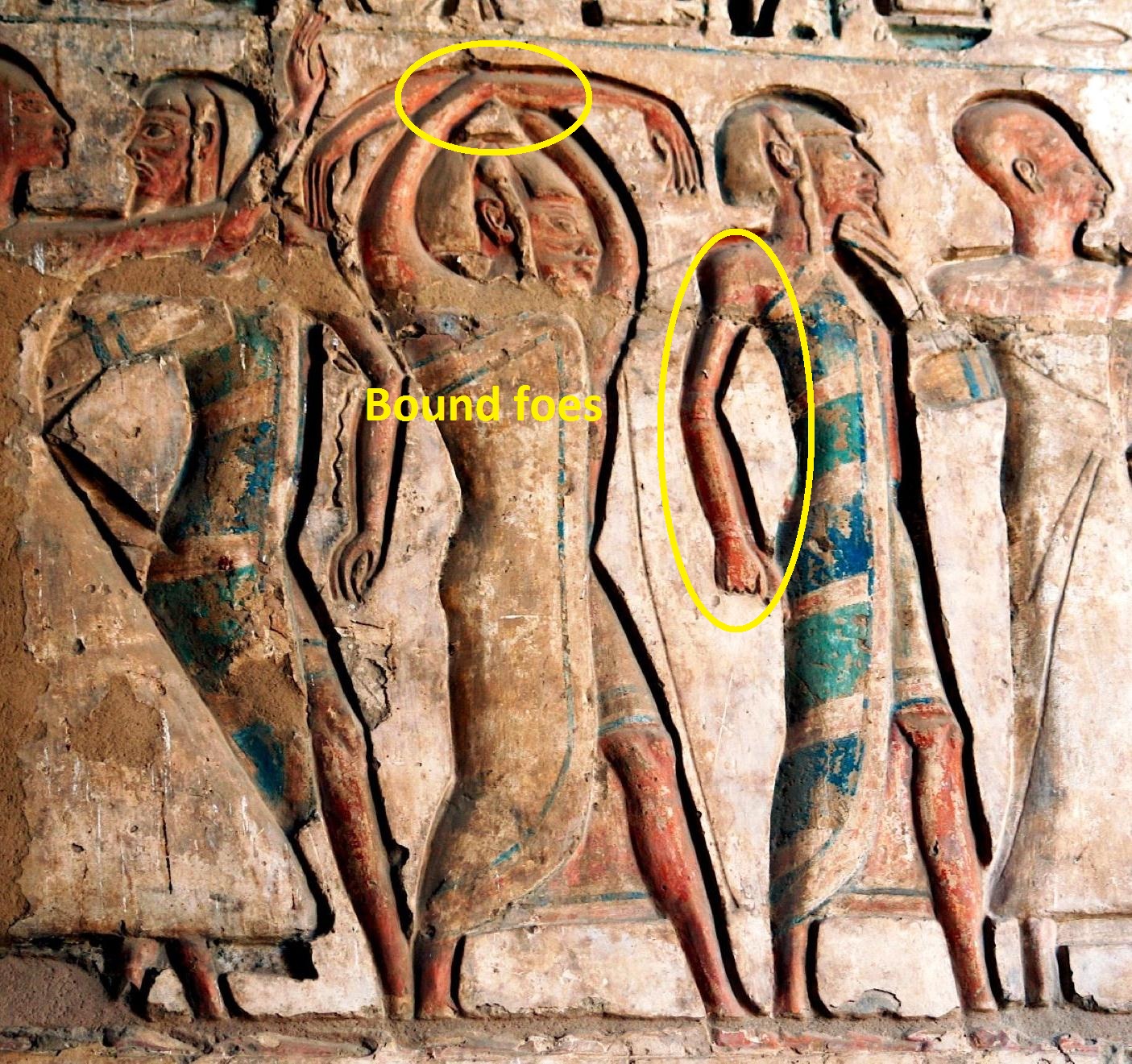Temple of Ramses III at Medinet Habu
NOTE: Bound prisoners, particularly foreign foes, are a common sight in Egyptian temples. They usually appear in the lower courses of the relief or in scenes depicting the successful result of battle. Ethnically distinct groups–Nubian, Libyan, or Asiatic–are sometimes further differentiated and specifically named to represent their home towns. Note in the above example that the Libyans are even shown with blue eyes.
These figures not only represent terrestrial foes conquered by the king, but also function as symbols of controlled chaos, bound in often excruciating positions by ropes terminating in lily or papyrus umbles (plants that refer to Upper and Lower Egypt, respectively). In battle reliefs at Medinet Habu and other New Kingdom temples, the leaders of these foes sometimes appear in manacles rather than simply being bound. In the database, bound and manacled foes are tracked separately, as are those that are controlled without ropes but are instead grasped in the hand or pressed under the king’s feet.



Nice topic – and blog. Do you have an automatic mailing app for your blog?
Merci.
Thank you! We do have an RSS link for automatic emails when we post; you will find the link in the upper right section of the site. You can also follow us on Facebook and/or Twitter to receive notifications when we update.